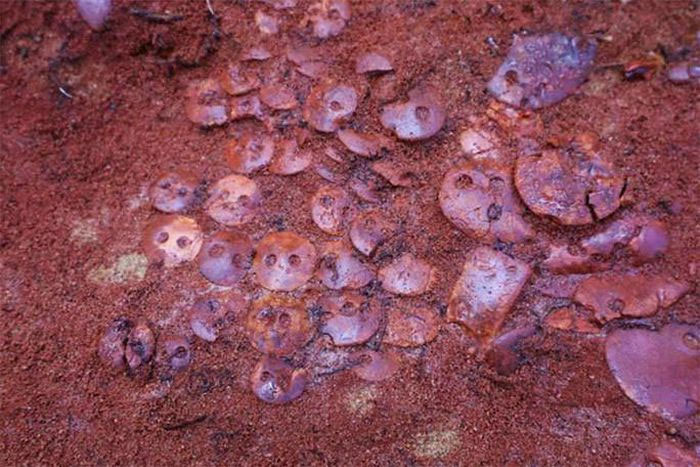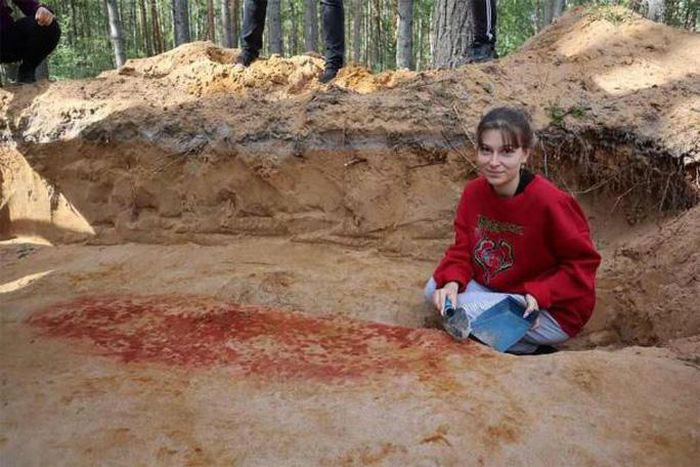Following the strange amber-colored buttons, Russian scientists have discovered an ancient warrior buried not in soil but surrounded by a collection of amber and precious gemstones, along with red ochre and flint.
According to Ancient Origins, the Russian scientists stated that the ancient tomb is astonishing because “nothing like this has ever been discovered before.”
The ancient warrior was found in Petrozavodsk, along the western edge of Lake Onega in the Republic of Karelia, Northwestern Russia. He was wrapped in animal skin and placed in a narrow oval-shaped pit, covered with a layer of red ochre and flint, which were highly valuable during his time, approximately 5,500 years ago.

The amber jewelry helped scientists locate the tomb – (Photo: Petrozavodsk State University).
Subsequently, instead of being covered with soil, the warrior was further adorned with a treasure trove of amber jewelry and a special type of gemstone. Even the amber used for making jewelry is a rare form of solid amber that has never been found in Eastern Europe before. The amber was crafted into buttons, pendants, and various disc-shaped ornaments…
According to the archaeological team led by Associate Professor Aleksandr Zhulnikov from Petrozavodsk State University, they were searching for unexplored ancient fortifications along the western shore of Lake Onega when they stumbled upon this rare ancient tomb.

A scientist at the site of the “treasure tomb” – (Photo: Petrozavodsk State University).
Based on the quantity of jewels and valuable tools placed in the tomb, they believe that he must have been a very important person within the local community. The treasures and items were not simply thrown into the grave to cover the body but were carefully arranged in layers.
There are no clear indicators to determine the gender of the person in the tomb; however, scientists found a carefully crafted flint arrowhead, which may indicate a spear, located near the tomb, a common marker for male burials during that era.
The amber jewelry also indicates a connection between the ancient inhabitants of the area and the tribes along the southern shore of the Baltic Sea, believed to be the source of the amber.


















































